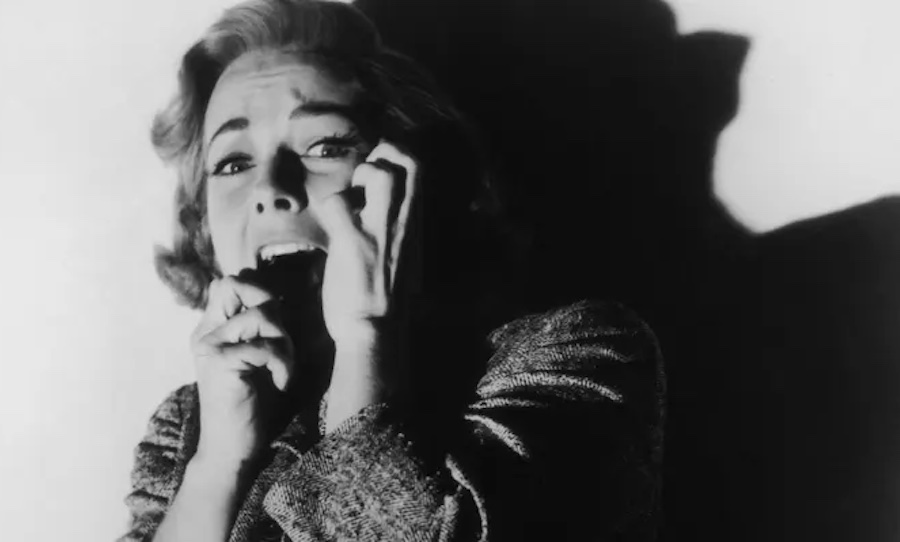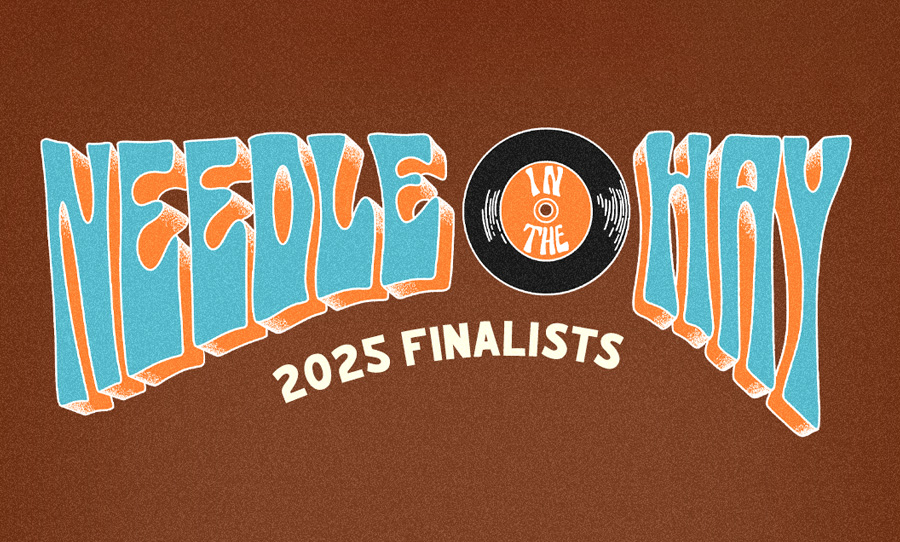The rankings: a descent into musical horror
Music doesn’t get more terrifying than this.
We’ve ranked music history’s most disturbing songs from unsettling to utterly traumatising, where even the ‘mild’ entries will haunt your dreams.

From synth-punk suicide notes to classical compositions that sound like hell’s choir, we’ve ranked the most psychologically devastating, sonically disturbing songs ever made.
By the time you reach the end, you’ll understand why these compositions feel less like entertainment and more like exorcisms – beautiful, brilliant, and absolutely horrifying.
Consider this your final warning: press play at your own risk.
Halsey – ‘The Lighthouse’ (2025)
Sirencore: when love songs sound like nautical disaster warnings
Halsey’s voice has always thrived in the shadows, but ‘The Lighthouse’ might be their most chilling work yet—a siren song for the damned. Over pulsing synths that mimic crashing waves, they spin a tale of doomed attraction, their vocals flickering between vulnerability and something more predatory. The production builds like a storm, with eerie harmonies that seem to call from just beyond the shore, while lyrics about “following the light straight into the rocks” blur the line between romance and self-destruction. It’s the musical equivalent of those ghost stories about sailors lured to jagged coasts, except here, the danger isn’t a rocky shore—it’s the intoxicating pull of someone who loves you enough to watch you drown.
Sufjan Stevens – ‘John Wayne Gacy, Jr.’ (2005)
Serial killer empathy hour, sponsored by your inner true-crime guilt
Sufjan Stevens’ fragile fingerpicking and choirboy vocals shouldn’t work as the backdrop for a serial killer’s story—and that’s exactly what makes it so devastating. Drawing parallels between himself and the ‘Killer Clown’ (“In my best behavior/I am really just like him”), Stevens forces listeners into uncomfortable empathy over sparse acoustic guitar. The horror peaks in the final verse, where he describes Gacy’s victims buried beneath the house “with their cars left running”—a detail so mundane it becomes grotesque. It’s a song that lingers like a guilty thought, proving true crime’s real terror isn’t the monster, but realising how thin the line is between “us” and “them.”
Billie Eilish – ‘bury a friend’ (2019)
Gen Z’s sleep paralysis anthem – because monsters under beds need representation too
The monster under your bed has a voice, and it sounds like Billie Eilish whispering “I wanna end me” over sub-bass that vibrates like a faulty heart monitor. Inspired by sleep paralysis and the eerie perspective of being the thing that haunts you, ‘bury a friend’ weaponises negative space—every muffled beat and distorted vocal chop feels like a shadow moving just outside your peripheral vision. The music video doubles down on the horror, with Billie as both victim and tormentor, her blackened eyes and needle-filled hands channeling The Grudge by way of Gen Z angst. It’s a masterclass in atmospheric terror, proving that true horror doesn’t need screams—just the right whisper at 3 AM when you’re alone with your thoughts.
Sleep Token – ‘The Summoning’ (2023)
R&B until the demonic possession kicks in. Swipe left on this cult leader
What begins as a sultry R&B confession slowly unravels into something far more sinister—the sound of devotion curdling into obsession. Sleep Token’s breakthrough hit wraps its tendrils around you with velvety vocals and hypnotic grooves, the lyrics painting a portrait of worship that feels equal parts romantic and ritualistic. Just when you’ve settled into the seduction, the track detonates into a chaotic jazz-metal breakdown, all skittering drums and guttural screams, as if the object of affection has suddenly bared fangs. The genius lies in its duality: Is this a love song or a summoning chant? A midnight tryst or a blood pact? By the final whispered plea—“Oh and my love/Did I mistake you for a sign from God?”—you’re left wondering if you’ve been listening to a serenade… or the last thing you’ll ever hear.
Bruce Springsteen – ‘Nebraska’ (1982)
Born to Run? More like Born to Snap. Starkweather’s spree gets the Boss treatment
On the surface, it’s classic Springsteen—a boy, a car, a girl, and the open road. But “Nebraska” isn’t some romantic escape anthem; it’s a first-person confession from Charlie Starkweather, the real-life teenage spree killer who murdered 11 people across the Midwest in 1958 with his 14-year-old girlfriend, Caril Ann Fugate, riding shotgun. Stripped down to just Springsteen’s ghostly vocal and a skeletal harmonica whine, the song feels like a crime scene Polaroid—bleached-out, unsettling, and eerily matter-of-fact. There’s no moralising, no redemption, just Starkweather’s chillingly simple explanation for the carnage: “There’s just a meanness in this world.” It’s Springsteen at his most unnerving, proving that the scariest stories don’t need monsters—just the quiet horror of a kid who woke up one day and decided to see what killing felt like.
The Louvin Brothers – ‘Knoxville Girl’ (1956)
Folk music’s darkest flex: making femicide sound like a church picnic
Murder ballads don’t come more brutally beautiful than this Appalachian standard, where Ira and Charlie Louvin’s heavenly harmonies sugarcoat a tale of senseless violence. The narrator’s matter-of-fact delivery—“I took her by her golden curls/And I dragged her ’round and ’round”—is somehow more chilling than any scream, the cheerful waltz rhythm making the horror feel even more mundane. Historians trace versions of this song back to 17th-century England, a reminder that misogynistic violence is as old as folk music itself. The Louvins’ rendition cuts deepest because it sounds like something you’d hear at a church picnic, forcing us to confront how easily brutality hides in plain sight when dressed in pretty melodies.
The Cure – ‘Lullaby’ (1989)
Arachnophobia never sounded so pretty
Robert Smith turns arachnophobia into a velvet-lined nightmare in this Grammy-winning stalker anthem. Over pizzicato strings that skitter like spider legs, Smith whispers about being devoured by the “Spiderman”—a metaphor so vivid you’ll start checking your ceiling for webs. The genius is in the contrast: Smith’s drowsy vocals make the horror feel like a whispered bedtime story… until that chorus hits, and suddenly you’re trapped in his candy-coated web. Fun fact: The creaking noise? Smith rocking in a chair. The muffled screams? Him with a towel over his head. Proof that true terror needs no special effects—just imagination.
Kate Bush – ‘Waking the Witch’ (1985)
Art-pop’s answer to The Exorcist – where lullabies curdle into Latin death chants
A psychedelic séance disguised as art-pop, ‘Waking the Witch’ drags you kicking and screaming into a 17th-century trial-by-ordeal. Bush layers courtroom gasps, distorted Gregorian chants, and her own bloodcurdling wails into a sonic witch hunt that feels alarmingly real. The genius is in the slow reveal—what begins as a gentle lullaby (“Wake up!”) mutates into a full-scale exorcism, complete with demonic pitch-shifted voices chanting Latin backwards. It’s the musical equivalent of being strapped to a dunking stool: beautiful, barbaric, and utterly petrifying. Even after 40 years, that final scream still feels like ice water down the spine.
Radiohead – ‘Climbing Up the Walls’ (1997)
Thom Yorke’s stalker lullaby
Thom Yorke doesn’t just sing about serial killers—he becomes one. Over a bed of dissonant strings (recorded in a medieval stone stairwell for maximum unease), Yorke’s whisper builds to a wordless, inhuman shriek that could peel wallpaper. The lyrics read like a stalker’s manifesto (“I am the pick in the ice”), while the production—all muffled drums and buzzing static—mimics the sound of someone breathing through your bedroom wall. Fun fact: That distorted scream at 3:20? It’s actually Yorke’s voice slowed down 400%. The BBC initially refused to play it. Smart move.
Nine Inch Nails – ‘The Downward Spiral’ (1994)
A nervous breakdown in musical form
Trent Reznor’s magnum opus of self-destruction doesn’t just describe suicide—it enacts it. Recorded in the house where Charles Manson’s followers murdered Sharon Tate, the title track is a 10-minute nervous breakdown set to detuned pianos and industrial clatter. The horror peaks in the final minutes: Reznor’s voice dissolves into static as a gun cocks, followed by the most unsettling silence in rock history. It’s not a song—it’s an autopsy set to music. Even Reznor admits he can’t perform it live anymore.
Leonard Cohen – ‘Avalanche’ (1971)
Seduction as a horror sport, narrated by your sleep paralysis demon
Leonard Cohen’s ‘Avalanche’ is a slow-burning nightmare dressed in flamenco guitar and swelling strings. From the opening line—“Well I stepped into an avalanche, it covered up my soul”—Cohen embodies a grotesque, gold mine-dwelling hunchback who sneers at piety and twists love into something predatory. His voice, cool and measured, makes the lyrics even more unsettling: “It is your flesh that I wear,” he murmurs, like a shadow slipping into your skin. Nick Cave has called it “the most terrifying song ever written,” and for good reason—it’s a masterclass in psychological horror, where the monster isn’t under the bed, but inside your head.
Pink Floyd – ‘Careful With That Axe, Eugene’ (1969)
The BBC banned it for ‘disturbing content’ – aka Roger Waters’ demonic karaoke
Few songs capture the moment a psychedelic trip curdles into nightmare quite like this live staple. Beginning with Richard Wright’s watery organ and Nick Mason’s cymbals hissing like radio static, it builds tension through whispers—“careful… with that axe… Eugene”—before detonating into Roger Waters’ primal scream, a sound so visceral it’s less heard than felt in the diaphragm. David Gilmour’s guitar mirrors the panic, spiraling like a man running through endless hallways, while the eventual return to that eerie calm is somehow worse: proof that the axe did fall, and we’re left to imagine the aftermath. Famously banned by the BBC for being “too disturbing,” it remains the gold standard for musical horror that lives in your nervous system.
Metallica – ‘One’ (1988)
Your worst nightmare, now with 100% more thrash-metal Morse code
Metallica’s ‘One’ isn’t just a metal anthem—it’s a claustrophobic hellscape inspired by Johnny Got His Gun, Dalton Trumbo’s anti-war novel about a WWI soldier blown apart by a landmine. James Hetfield’s growl narrates the horror: limbs gone, senses dead, but the mind screaming, intact. The song’s genius is in its structure: clean, mournful guitars mirror the soldier’s fading hope before machine-gun riffs kick in, mimicking his frantic Morse-code pleas for death.
Nick Cave & The Bad Seeds – ‘Song of Joy’ (1996)
A murder ballad so elegant, you’ll forget to check for bloodstains on the lyrics
Nick Cave could write a murder ballad in his sleep, but this Murder Ballads opener remains his most unsettling. Over a funereal waltz, he narrates meeting a “sweet and happy” woman named Joy, only to discover her later “bound with electrical tape/Her mouth stuffed with a gag.” Cave’s baritone relishes every grisly detail, from the “sleeping bag” corpse to the killer’s taunting letter. The kicker? The narrator’s suspiciously intimate knowledge of the crimes, capped with the line “They never caught the man”—delivered like a punchline at a dinner party. It’s Southern Gothic meets true-crime podcast, proof that Cave understands horror isn’t about blood, but the smile on the person who spills it.
Diamanda Galás – ’25 Minutes to Go’ (1998)
Johnny Cash’s gallows humour gets a Greek tragedy remix. Bring a therapist
Where Johnny Cash’s version of Shel Silverstein’s ’25 Minutes to Go’ leaned into gallows humor, Diamanda Galás turns it into a 25-minute séance. Her voice—somewhere between a whisper and a death rattle—slinks over dissonant piano, each note dragging like a shackle. When she gasps, “Now here comes the preacher to save my soul / With 13 minutes to go,” it’s not camp; it’s the sound of a woman drowning in dread. By the end, the jaunty climax of Cash’s version is replaced by a guttural moan, as if the noose snapped mid-laugh. It’s less a song than an exorcism.
Eminem – ‘Kim’ (2000)
A 911 call auto-tuned into a horrorcore opera. Trigger warning: marriage
Domestic violence has rarely sounded as raw as this three-act play of jealousy, rage, and murder. Stripped of beats or hooks, “Kim” is just Eminem screaming at his then-wife, alternating between vicious insults and grotesquely intimate asides (“Sit down bitch, if you move again I’ll beat the shit out of you”). The genius—and horror—lies in its realism: the way car doors slam during the argument, how he shifts between voices, the chilling moment when their young daughter’s name cuts through the chaos. Unlike his cartoonish violence elsewhere, this feels terrifyingly plausible, the audio equivalent of a 911 call where you can hear the punches land. It’s the rare song that makes listeners debate whether art should go this dark—and whether anyone involved walked away unscathed.
György Ligeti – ‘Requiem’ (1965)
The universe’s ringtone when it ghosts humanity – all dissonant shrieks and zero apologies
The sound of the cosmic void given voice. Ligeti’s avant-garde masterpiece—used in 2001: A Space Odyssey’s monolith scene—isn’t just music; it’s a swarm of dissonant choral voices crawling over one another like insects in zero gravity. The sopranos shriek in microtonal clusters while basses hum like a dying starship’s engine, creating harmonies that defy earthly logic. There are no lyrics, no melody—just the sheer terror of the infinite, as if you’re hearing the universe’s indifference to human existence made audible. Kubrick weaponised it to soundtrack alien contact, but the true horror lies in its abstraction: it’s the musical equivalent of staring into the abyss and realising the abyss has been staring back all along.
Ethel Cain – ‘Ptolemaea’ (2022)
Dante’s Inferno meets a True Crime podcast, scored by a choir of hungry ghosts
A suffocating descent into religious horror and bodily violation, ‘Ptolemaea’ is the sound of a nightmare you can’t wake up from. Named after Dante’s lowest circle of Hell, the nearly 7-minute track builds from eerie whispers into a cacophony of guttural screams, as Cain’s protagonist is consumed by a cannibalistic predator—both literal and metaphorical. The song’s genius lies in its slow unraveling: twangy, hymn-like guitars give way to industrial noise, while Cain’s voice morphs from angelic pleading to raw, wordless terror. The climactic moment—a distorted voice growling “Don’t look at me!”—feels like being trapped in a basement with something unholy. It’s Southern Gothic meets The Texas Chain Saw Massacre, a modern masterpiece of audio horror that lingers like a stain on the soul.
Suicide – ‘Frankie Teardrop’ (1977)
The sound of capitalism’s teeth grinding a working-class man into pulp – with bonus existential screaming
Often called “the scariest song ever made,” this 10-minute synth-punk nightmare follows a destitute factory worker who murders his family and himself. Alan Vega’s hyperventilating vocals make Frankie’s panic tactile (“We’re all Frankies… we’re all lying in hell!”), while Martin Rev’s minimalist electronics mimic a failing heartbeat. The real terror is in the silences—the way the music drops out after the gunshot, leaving only Vega’s sobs and the hum of a cheap amplifier. Inspired by the 1970s economic crisis, it’s less a song than a stress dream about capitalism, where the American Dream curdles into a scream in a walk-up apartment. Even decades later, its influence pulses through artists from Trent Reznor to Lingua Ignota—proof that true horror never dies, it just finds new hosts.



